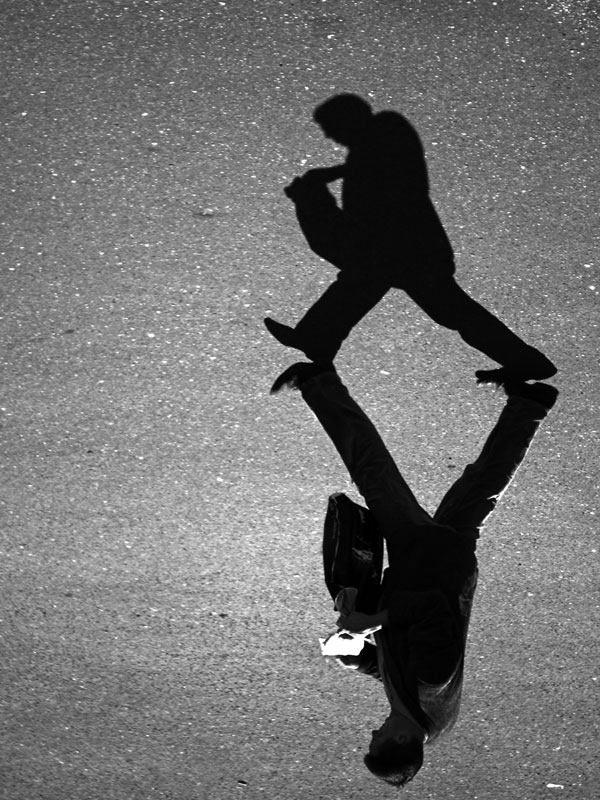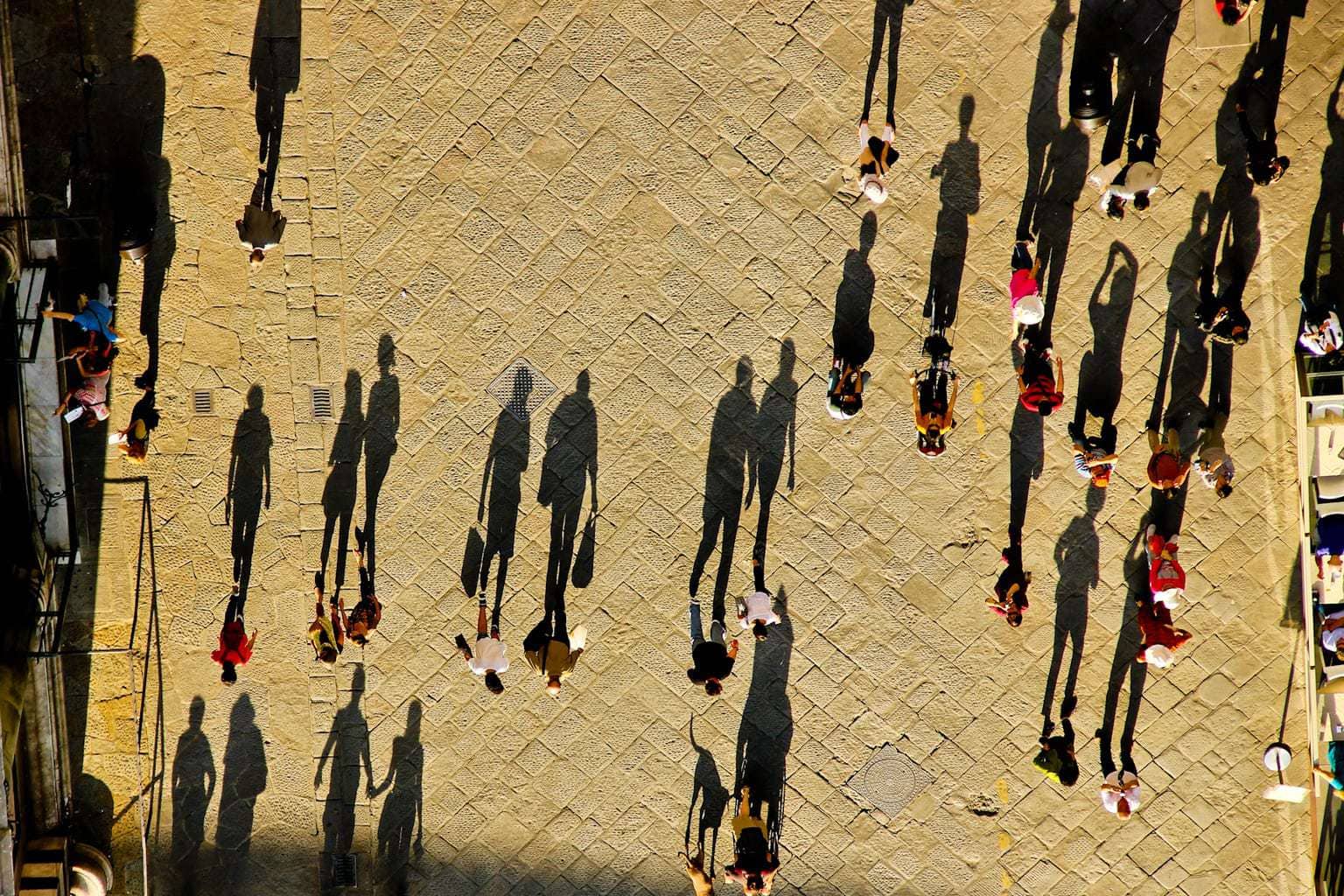The fact that light is the fundamental raw material of all photography does not mean that you cannot achieve spectacular photos without it. In fact, the absence of light can cause much more impact than you can imagine.
Shadows are usually a resource widely used by photographers to play with silhouettes and shapes, to convey sensations or even to turn them into the very protagonists of the photographs. You just have to learn to work with them.
To do this, in today's article, I have prepared a large number of tips for you so that you can turn your worst enemy, darkness , into a powerful ally. In addition, we have published on the blog this mega guide on lighting in photography, with all the tips and tricks to master the light (and shadows) in your images.
Catching your shadow will no longer be a problem!

SHADOWS AS A COMPOSITION ELEMENT
Not all the elements that you can use when composing your photographs must be bathed in light. You can also use the shadows as one more element to take into account when framing your photographs .
1. The shadows are an excellent guide to direct the gaze and the attention of the viewers within the frame. Try to play with the patterns, lines and rhythms that they draw to attract the eye and attract attention. Get the most out of all the elements that can draw them in your photos.

2. You can also arrange it as you would any other object to take up space that would otherwise be empty. Doing so will give your photographs greater strength since by occupying said space, you will be able to balance the "visual weight" of your photographs. You can counteract the excessive weight generated by placing a person too close to the edge of the frame by casting their shadow in the opposite direction.

3. Due to the great contrast that is generated between lights and shadows when the lighting is very hard, try to keep it simple so as not to distract the gaze from what you really want to show. Eliminate from your compositions all those elements that, instead of helping you to attract the attention of the spectators, end up dispersing it.

4. In order to do it most effectively, pay close attention to the intensity and direction of the light. The intensity (hard or soft) and the direction (front, side, overhead, etc.) of the light will be responsible for adding more drama to your photos, so you should not ignore them. The more lateral the light is, the stronger the photograph will be. Taking your photographs early in the morning or as soon as the sun begins to set (blue or golden hour) will guarantee you the best results.
5. Depending on how the light falls on the scene, the shapes that the shadows draw on it will vary. The harsher the light, the more definition (contrast) your shadows will have. Take advantage of this phenomenon to draw with darkness in the frame whatever element you come across: statues, buildings, people, bars, animals, etc. If you accompany a subject or object with its shadow, you will give it greater visual force. Take advantage of the silhouettes !

6. And if you want to wow everyone, try changing the perspective or even completely flipping a photo. A simple photo of a subject with their shadow cast on the ground can go from being just a photo to a great photo, just by flipping it. Go ahead and rotate the images. Viewers will be surprised to see an image that is not presented in an "unnatural" way.

THE SHADOWS AS PROTAGONISTS
You can see the shadows as a direct consequence of the light, or you can see them as a great opportunity to work with new protagonists. The shadows can become your next great protagonist .
7. Shadows are an excellent way to "hide the protagonists ." What do I mean? By drawing the silhouette of a certain subject or object, the shadows awaken in the viewer the need to deduce and imagine the reason that has drawn them. Hiding your subjects in the shadows is a great way to keep the viewer's attention in the frame for longer.

8. In the same way, when the shadow of a subject or object is projected in a strange or atypical way, attention will be focused on it. Unusual phenomena such as flipping the photos, or strangely shaped shadows often attract and direct the eyes towards them.
9. If you can't get the light to fall naturally on your motives to draw the shadows you're trying to portray, don't despair, you can always resort to artificial light. There is no point in getting old while you wait for the sun to position itself in the exact place for your shot, especially if you have a focus or external flash to help you out. You can use diffusers to concentrate or dissipate the light and if you don't have one on hand, don't worry, making your own is very simple . So now you know, charge the batteries of your flash, reflector or flashlight and start drawing your own shadows yourself.

10. Of course, either with natural or artificial light, try not to fall into monotony. Shadows are a very fertile field for experimentation, so try to stay active and creative. Dare to innovate by changing the perspective, the angle of the shot or the intensity of the light in order to achieve unique results that will leave everyone speechless.

11. You can also take advantage of the backlights and shadows that they generate and capture them with your camera. In a backlight , the main protagonist is the shadow that is generated as a result of placing your protagonist between the light source and the camera that is going to portray him. Shadows and silhouettes go hand in hand, don't separate them.

USE SHADOWS TO ENHANCE YOUR MESSAGES
As I mentioned before, you can use the shadows not only to draw in the frame but also to convey sensations and enhance the messages implicit in your photographs.
12. The way in which you arrange the shadows in the frame and the direction of these will charge or not your photographs with expressiveness. That is why you should evaluate all possible framing possibilities, in order to enhance the sensations that they transmit.

13. The contrast that is generated between lights and shadows is excellent for conveying the sensation of texture of a certain surface. Again, the more lateral the light that falls on said texture, the more relief it will have. Textured surfaces draw more attention than smooth surfaces, so casting a shadow on a textured surface will have more impact. Imagine a woman walking in heels down a cobbled street: the texture of the floor can even convey the sensation of a creaking noise with each step.

14. It is also possible that, thanks to the shadows, your photographs are sadder, melancholic or gloomy. I eat? The key is to know the qualities of light in the various circumstances where these feelings arise: cloudy days , fog, rain , etc. and in understanding how said light draws the shadows in such circumstances. For example, on a foggy day the shadows will be very diffuse, which will convey a more gloomy feeling or on a sunny day, the sun's rays crossing a forest can give your photos more drama. Keep in mind that the softer the light, the softer the edges of the shadows will be, and the longer the light, the more defined.

fifteen.If, despite knowing and exploiting the qualities of light in a certain scene to the full, you are still not satisfied with the shadows you have achieved, you can always add a bit of drama by editing them on the computer. If the shadows in the photos you just took are not dark enough, increase the contrast and tighten up the blacks and shadows in order to correct such situation in post production. But remember that it is always important that you correctly measure and expose your photographs to maximize their quality, so I recommend that you use the "spot metering" mode in the area with the greatest lighting, in order to maximize contrast and do not over expose the shot. If you have any questions about how to do it, don't worry, take a look at the following article: “Detailed Guide: How to Perform a Correct Metering and Exposure in Your Photographs ”.
16. Let your imagination run wild and start drawing with shadows!

Did you enjoy today's article? Do you find it useful? If so, I would appreciate it if you recommend it on Facebook, Twitter or Google+. Thanks ?



